I was about to trust my life to some metal cables anchored to a cliff face high above the Ardeche River. I don’t have a fear of heights – I’ve flown a stunt plane and mastered a knee hang on the flying trapeze, after all – but I’d be lying if I didn’t admit that the opening scenes from Cliffhanger were flashing through my mind. I clipped my double carabiners to the cable and took my first steps. There was no turning back now; no chickening out of the Via Ferrata du Pont du Diable.
Via Ferrata is Italian for “Iron Road” and though not much translates literally when it comes to Italian, a Via Ferrata is literally a “road” made on mountains from fixed cables, ladders, and bridges. They were originally built to aid the Alpini, a branch of the Italian Army, in WWI to traverse the Dolomites. After the war, the via ferrata were maintained and became a popular attraction. Today the high-altitude adventure routes can be found in several European countries like Italy, Austria, Germany, Switzerland and France. There are even a handful now in the US and Canada.
Anyone can climb a via ferrata with no experience, but I wouldn’t recommend it if you have a fear of heights. Each climber wears a harness with a pair of carabiners. A safety cable runs along and is bolted to the rock-face as you cross cables and climb up. It’s essentially aided climbing and as you come to the point where the cable is bolted to the rock, you must un-clip and clip on to the next section of cable. This is where the double carabiner, or Y-configuration, comes in to play. You un-clip only one at a time so that you are always connected to a safety cable.
We got the hang of using the cables and carabiners on a small training section. And then we dove right in with crossing a high wire cable across a section.
Clank, clank, clank. It was the only sound as I inched my way across that first cable, the carabiners reassuringly clanking together with each step. I reached the other side and let out the breath that I’d been holding.
Each section was a different challenge. Some sections we’d simply have to make our way around corners; those were the easy sections. I’d even clip in my third safety clip and felt comfortable enough to pull out my iPhone and snap some photos. Other sections were a series of rungs spaced for climbing up a sheer vertical cliff face. Thankfully our instructor had the patience of a saint. I was leading the way and I’ve never ascended anything more than a 30-foot rock climbing wall…and that was years ago. Sometimes I’d misstep and have to move down before ascending again on a route that worked for me.
After about an hour of climbing, we reached the zipline that would carry us each one by one across the Ardeche River. On the other side, we would have the option of an escape route that leads back to the car park or to continue on for about another hour of climbing on the “challenging” section.
Challenging section? What had I just climbed, then? (Officially, the route is marked a D on the via ferrata difficulty level scale, which means difficult and for those familiar with via ferrata.)
That was what was particularly great about this via ferrata in Ardèche, France – a first timer like me could challenge myself without getting in over my head and someone more experienced like Tim could continue on. I clipped my pulley on the cable and went soaring across the zipline, proud I’d just completed the section that I did.
With shaking legs, I hiked back toward the car park while keeping an eye on Tim. He looked like an ant from my perspective down below. He said it was pretty difficult to take photos on the next section that he did, as sometimes the climb was nearly inverted. I definitely wasn’t quite ready for that, so I’m glad I chose the escape route. The via ferrata was definitely an awesome heart pumping adventure and we can’t wait to tackle some of the other ones at home in the Pyrenees now.
Know Before You Go
Our trip to Ardeche was in collaboration with Tourisme Ardeche. However, Luxe Adventure Traveler maintains full editorial control of the content published on this site. As always, all thoughts, opinions, and enthusiasm for travel are entirely our own. This article contains affiliate links. When you book on Booking.com through our affiliate site, we earn a small commission at no additional cost to you.

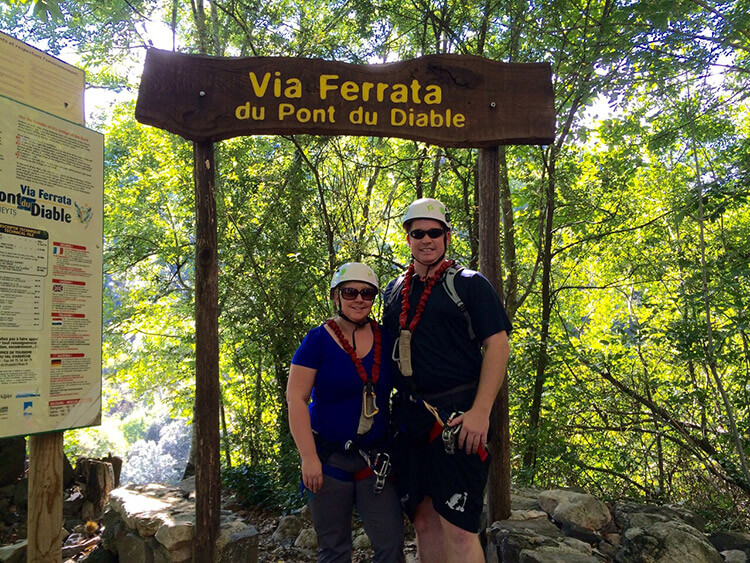
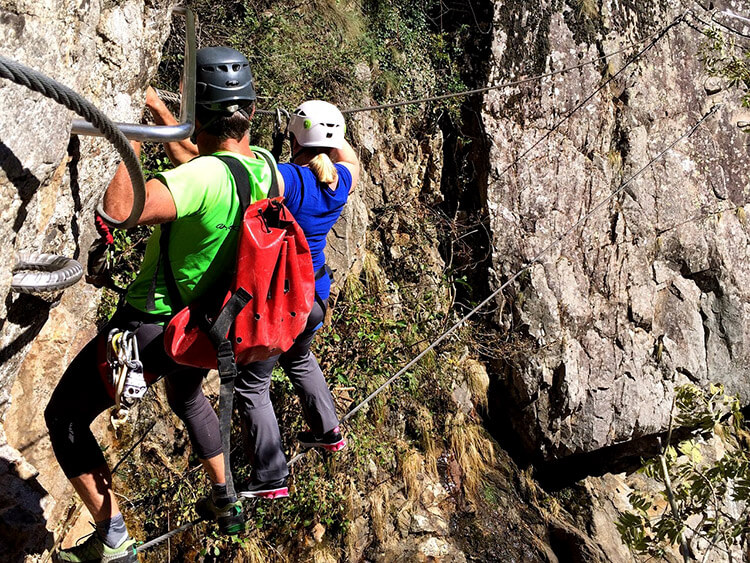

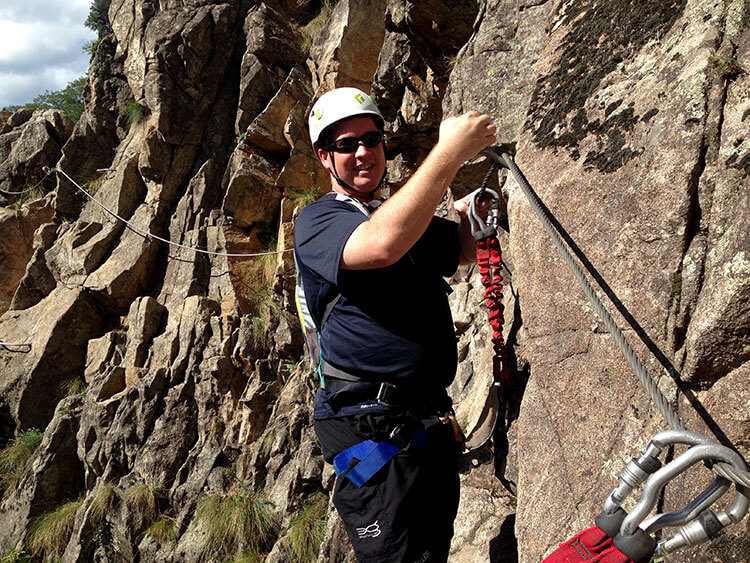

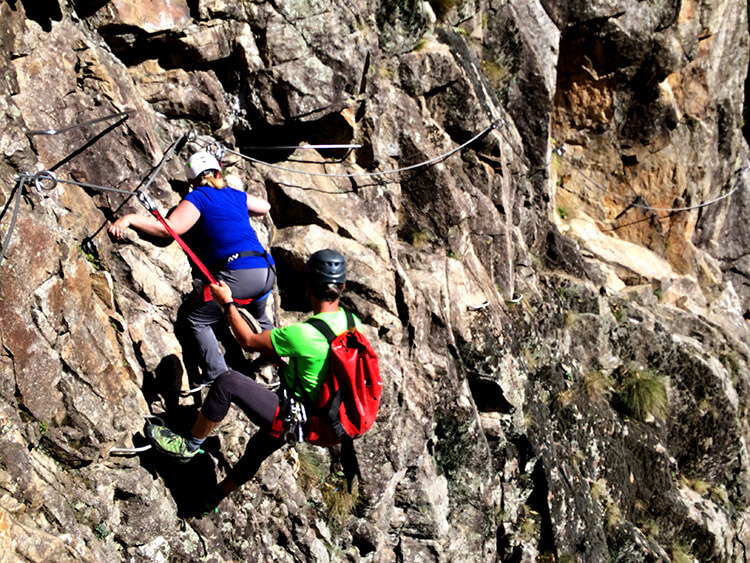
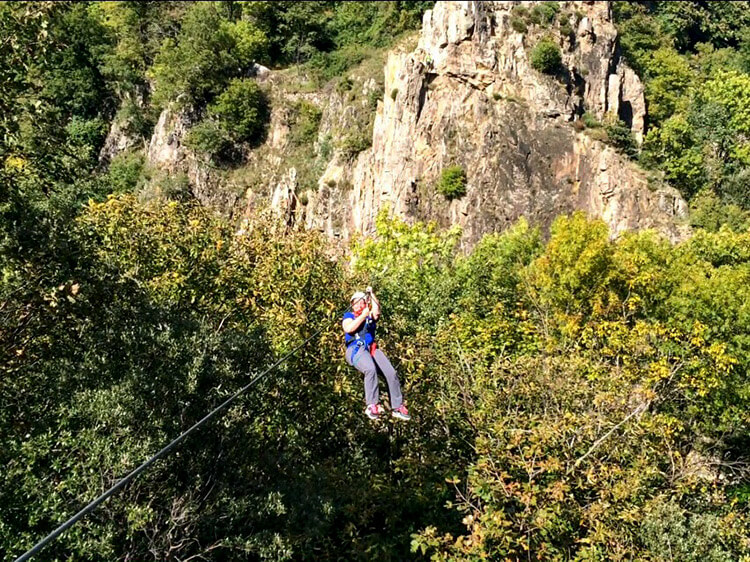
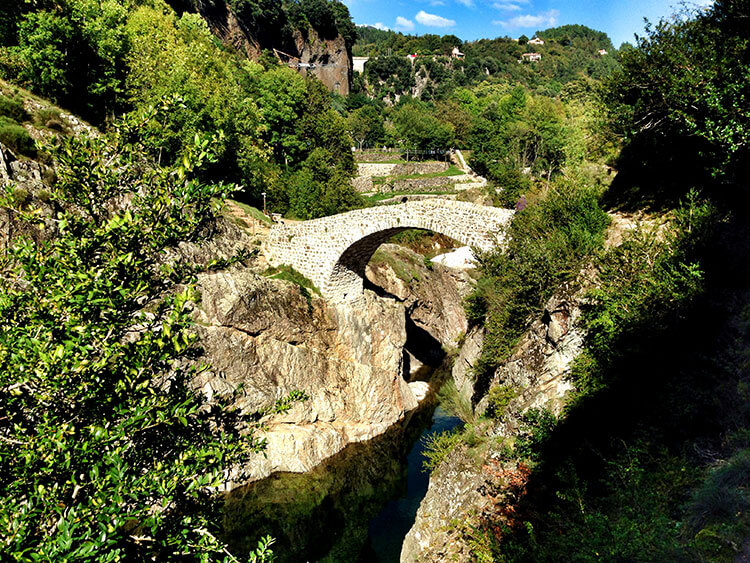
Kristin Addis says
Looks like you did a much gnarlier via ferrata than I did, but what fun they are!
Jennifer Dombrowski says
Definitely Kristin! It’s already snowing in the mountains here in Italy, but I’m looking forward to trying out some more Via Ferrata routes next year.
Kenin Bassart says
You are a brave soul indeed! I haven’t ever tried rock climbing, but it’s definitely on the list.
Leyla Giray says
Now I AM petrified of heights but I’ve always been curious about Via Ferrata – morbidly fascinated, more like. And since I can’t climb them myself, I was thrilled to see all these photographs showing me what it is really like. I’d love to try this but a bit lower to the ground… the Ardeche region is so beautiful though, and I hope you had a chance to sample some of the food while you were there!
the lazy travelers says
we’re not scared of heights buuuut would def be a little scared to try this. you deserve so many glasses of wine after a trek like this! xo
Laura says
You’re definitely living up to the “adventure” in your name with this one 🙂 It also kind of makes me laugh because we just published a post about having a fear of heights!
Jennifer Dombrowski says
A via ferrata is definitely not for people with a fear of heights. I’m not afraid of heights, but I will admit I was probably gripping on to the rocks a little more than was necessary. I don’t know about actual rock climbing, but I’m up for trying more via ferrata routes for sure!